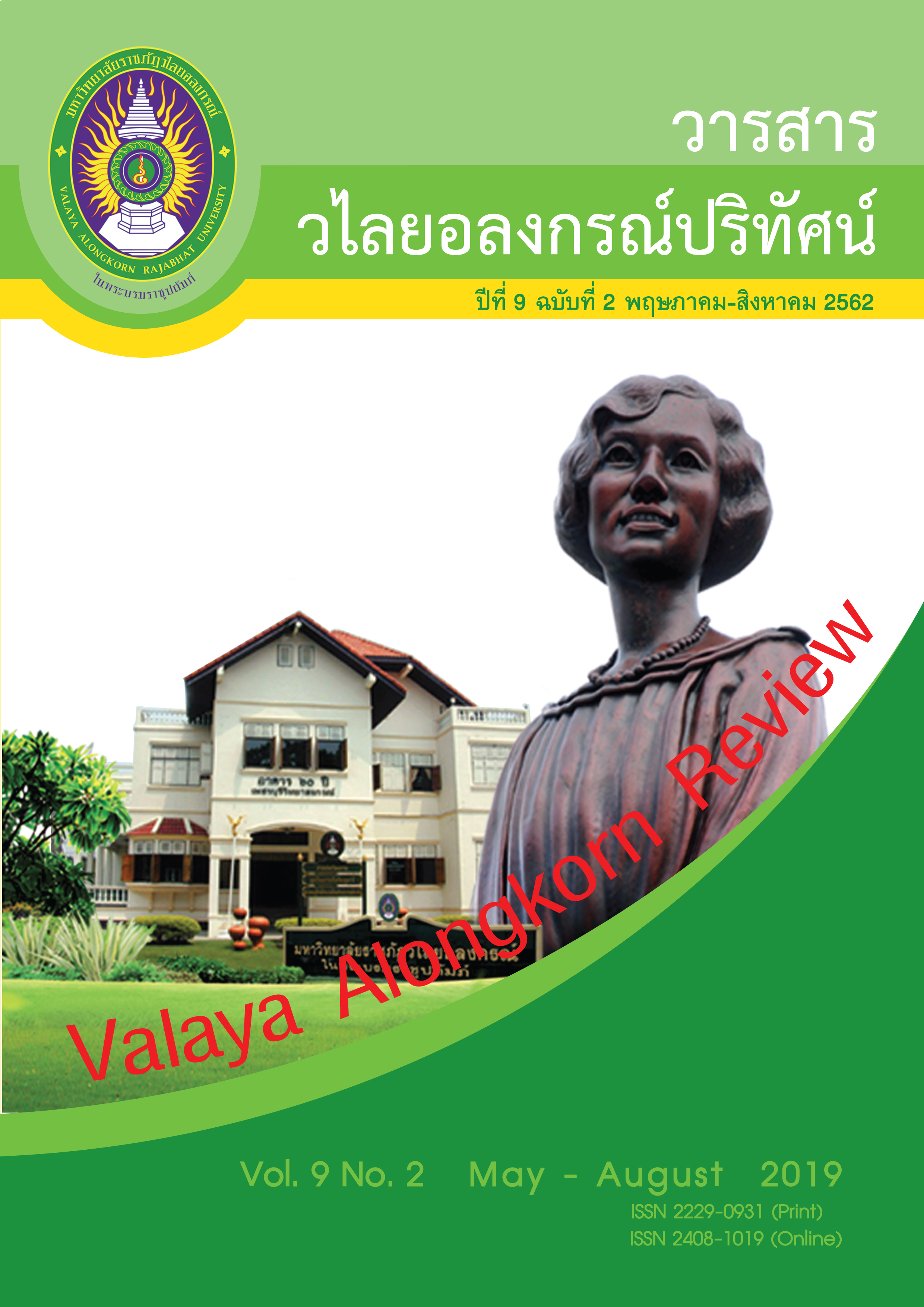“แกงฮังเล” วัฒนธรรมและความเชื่อ
คำสำคัญ:
แกงฮังเล, อาหารภาคเหนือ, วัฒนธรรมอาหารบทคัดย่อ
“แกงฮังเล” อาหารที่มีชื่อเสียงและเป็นที่รู้จักของภาคเหนือมีเนื้อสัตว์เป็นส่วนประกอบหลักพร้อมด้วยเครื่องเทศที่มีกลิ่นและรสชาติเฉพาะ โดยที่แกงฮังเลได้รับอิทธิพลมาจากพม่าตั้งแต่อดีต ซึ่งมีชื่อว่า “แวะตาฮีน” ในภาษาพม่า มีความหมายตรงกับ “แกงฮังเล” และเป็นอาหารที่ถูกสืบทอดกรรมวิธีการทำมาจนถึงปัจจุบัน แกงฮังเลสามารถจำแนกได้ 2 ประเภท คือ แกงฮังเลม่าน และแกงฮังเลเชียงแสน นอกจากนั้นความเชื่อของบุคคลและสังคมที่ได้ยึดถือปฏิบัติสืบต่อกันเกี่ยวกับแกงฮังเลสามารถสะท้อนให้เห็นถึงความซับซ้อนทางสังคมและวัฒนธรรมของภูมิปัญญาที่เกิดจากความรู้ ความเข้าใจธรรมชาติ ดังนั้นแกงฮังเลจึงเป็นอาหารที่แสดงถึงวัฒนธรรมและความเชื่อที่แฝงอยู่ประกอบด้วย คุณค่าที่มีต่อร่างกายและจิตใจ การเป็นอาหารสำหรับประเพณี การรวมกลุ่มวัฒนธรรมเดียวกัน การถ่ายทอดภูมิปัญญาการแลกเปลี่ยนและผสมผสานวัฒนธรรมของคนต่างวัฒนธรรม
เอกสารอ้างอิง
โกมล จันทวงษ์. (2560). การอภิวัฒน์ชุมชนท้องถิ่นในกระแสโลกาภิวัฒน์. วารสารวไลยอลงกรณ์ปริทัศน์. 7(1): 115-131.
ชวาลา ละวาทิน และทิพย์สุคนธ์ ไตรต้นวงศ์. (2558). อาหารและขนมไทยพื้นบ้านโบราณ หมู่บ้านคลองขนมหวาน อ.ปากเกร็ด จ.นนทบุรี. วารสารวิจัยและพัฒนา วไลยอลงกรณ์ ในพระบรมราชูปถัมภ์ สาขามนุษยศาสตร์และสังคมศาสตร์. 10(1): 142-155.
ชูสิทธิ์ ชูชาติ. (2525). พ่อค้าวัวต่าง: ผู้บุกเบิกการค้าขายในหมู่บ้านภาคเหนือของประเทศไทย (พ.ศ. 2398 - 2503). กรุงเทพฯ: กระทรวงศึกษาธิการ.
ทรงสิริ วิชิรานนท์ และคณะ. (2557). วิถีชีวิตและความมั่นคงของอาหารภาคใต้. วารสารวิชาการและวิจัย มทร.พระนคร. 8(1): 94-107.
ทัศนีย์ อารมณ์เกลี้ยง และสุภาพ ฉัตราภรณ์. (2557). เส้นทางการสืบสานภูมิปัญญาอาหารล้านนาสู่ความยั่งยืน. วารสารเกษตรศาสตร์ (สังคม). 35: 189-205.
พัทยา สายหู. (2532). กลไกของสังคม. กรุงเทพฯ: จุฬาลงกรณ์มหาวิทยาลัย.
มณี พยอมยงค์. (2532). พิธีกรรมล้านนาไทย. เชียงใหม่: ธาราทองการพิมพ์.
วาณี เอี่ยมศรีทอง และประหยัด สายวิเชียร. (2538). อาหารล้านนา. เชียงใหม่: กลางเวียงการพิมพ์ คณะศึกษาศาสตร์มหาวิทยาลัยเชียงใหม่.
ยศ สันตสมบัติ. (2543). ความหลากหลายทางชีวภาพและภูมิปัญญาท้องถิ่น เพื่อการพัฒนาอย่างยั่งยืน. กรุงเทพฯ: สำนักงานคณะกรรมการวิจัยแห่งชาติ.
สุรพล ดำริห์กุล. (2559). คุณครูประจำโรงเรียนหนองป่าครั่ง เชียงใหม่. สัมภาษณ์, 10 กุมภาพันธ์ 2559.
สิริรักษ์ บางสุด และพลวัฒน์ อารมณ์. (2558). โอชะแห่งล้านนา :มรดกวัฒนธรรมอาหารเมือง.กรุงเทพฯ: แสงแดด.
อภิญญา ตันทวีวงศ์. (2556). บนเส้นทางการจัดการด้านอาหารเพื่อคนไทยทั้งมวล. กรุงเทพฯ: สำนักงานกิจการโรงพิมพ์องค์การทหารผ่านศึก.
อุบลรัตน์ พันธุมินทร์. (2542). รายงานการวิจัยการศึกษาวัฒนธรรมคนล้านนาในพม่า. เชียงใหม่:ภาควิชาภาษาไทยคณะมนุษยศาสตร์มหาวิทยาลัยเชียงใหม่.
Rogers, E. M. (1976). Diffusions of innovations. New York: Free Press.
ดาวน์โหลด
เผยแพร่แล้ว
รูปแบบการอ้างอิง
ฉบับ
ประเภทบทความ
สัญญาอนุญาต
ข้อความที่ปรากฏในบทความแต่ละเรื่องในวารสารวไลยอลงกรณ์ปริทัศน์ เป็นความคิดเห็นของผู้นิพนธ์แต่ละท่าน มิใช่เป็นทัศนะและมิใช่ความรับผิดชอบของกองบรรณาธิการจัดทำวารสาร และ
มหาวิทยาลัยราชภัฏวไลยอลงกรณ์ ในพระบรมราชูปถัมภ์


